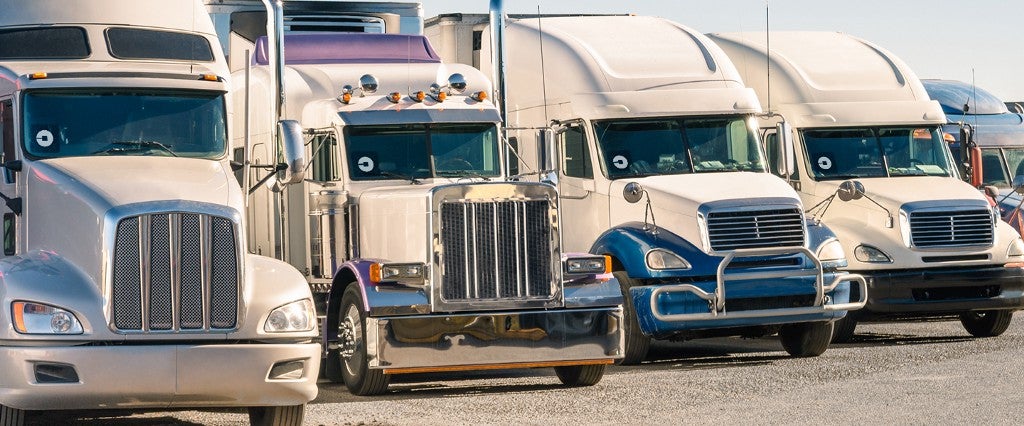At the end of December, Uber debuted its newest venture, Uber Freight, its foray into the un-sexy yet lucrative world of logistics. Many saw Uber’s entry into freight as a death knell for trucking companies, as Uber is looking to build a fleet of driverless trucks.
And while the threat to trucking is real, Uber Freight poses a more immediate threat to the thousands of mid-level, white-collar support staff jobs in the industry.
My first job out of a college was for Coyote Logistics, one of the several third-party logistics (3PL) firms Uber will now compete with, and every day at Coyote I would sit there thinking (wishing!) some well-financed, technologically savvy company would come along and streamline the process and free me from the mindless drudgery of the job.
Here’s how things operate in third-party logistics (also known as freight brokerage).
A team of account representatives speaks with “shippers” — companies looking to move goods from Points A to B — about what shipments (or “loads”) they’re looking to move that day, and then enter that information into their software system. Meanwhile, another team of account representatives speaks with “carriers” (trucking companies) about where in the U.S. they have empty trucks and enter that data into the software, as well. Operations workers then match trucks to shipments and broker deals.
Say Anheuser-Busch needs to move cases of Budweiser from its plant in St. Louis to a warehouse in Chicago, for example. And say a truck empties a shipment in nearby St. Charles, Missouri, and wants to pick up a load for its ride back to Racine, Wisconsin. Anheuser-Busch would pay the 3PL to handle the shipment, and the 3PL would turn around and pay the truck to move the beer. (The 3PL makes money by paying the trucker less than Anheuser-Busch paid it.)
If this process seems wildly inefficient, it is! A 3PL is the definition of a middleman, and employs hundreds, if not thousands, of operations employees to input this data and brokers these deals every day.
Uber is uniquely positioned to streamline the industry, though. Much like the company’s ride-hailing app cuts out the taxi dispatcher and allows people to hail rides directly from drivers, Uber Freight can create a platform where shippers and truckers broker shipping orders directly with one another, effectively rendering obsolete thousands of 3PL workers. It replaces people with software, and configures a labor-intensive industry into a SaaS business.
Uber has hired away several of my former colleagues to build its freight division, including the former chief business development officer and another employee who was being groomed for upper-level management, as well as about a dozen others from competing 3PL firms C.H. Robinson, Echo Logistics, AFN, Command and 4Front.
There’s a chance these competitors will be able to withstand Uber’s entry to the market. They have pre-existing relationships with many of the world’s largest shippers, and reputations for moving loads reliably and cheaply. And many of them already host their software in the cloud so shippers and carriers can access it directly.
Uber, for its part, has billions in venture capital it can devote toward building a freight platform and a willingness to drive down prices in its relentless pursuit of market share. The domestic 3PL market is worth more than $150 billion by some estimates, so it’s fair to assume Uber will approach it aggressively.
Again, none of this means that trucking is safe. Uber acquired self-driving truck startup Otto in August 2016, and two months later Otto made its first automated delivery: 50,000 cans of Budweiser it delivered 120 miles from Fort Collins, Colorado, to Colorado Springs. That said, truck drivers’ jobs are secure for the foreseeable future. Otto’s trucks require a human driver be present and are only fully automated for highway driving. And it’ll be years (decades?) before Otto passes regulatory hurdles. If cities are already wary of Uber’s driverless cars program, they’re even less likely to let a multi-ton 18-wheeler ride without a driver.
The more immediate threat is to the thousands of operations workers who make sure the trucks run on time. The loss of these jobs is inevitable—comparable to what’s happened in the commodities trading industry, where high-frequency trading algorithms have replaced human brokers.
Many people who are not me enjoy working in third-party logistics. The job is relatively easy — anyone who’s mildly competent and can handle the monotony of it can reasonably expect to earn a six-figure living after a few years of hard work. You don’t need a specialized education (or even a college degree) to do the job well.
But much of the work is also mindless data entry, and it’s easy to see why Uber sees an opportunity to do things more efficiently.
Many people have pointed out that automation, not China or Mexico, is the real threat to blue-collar American jobs. Overlooked, however, are all the non-executive white-collar administrative jobs that will be rendered obsolete, too.
Famed venture capitalist Marc Andreessen is fond of the phrase “software is eating the world,” meaning that it’s replacing many of the post-industrial, pre-internet jobs once thought to be essential. Problem is, one man’s efficiency is another’s unemployment.
